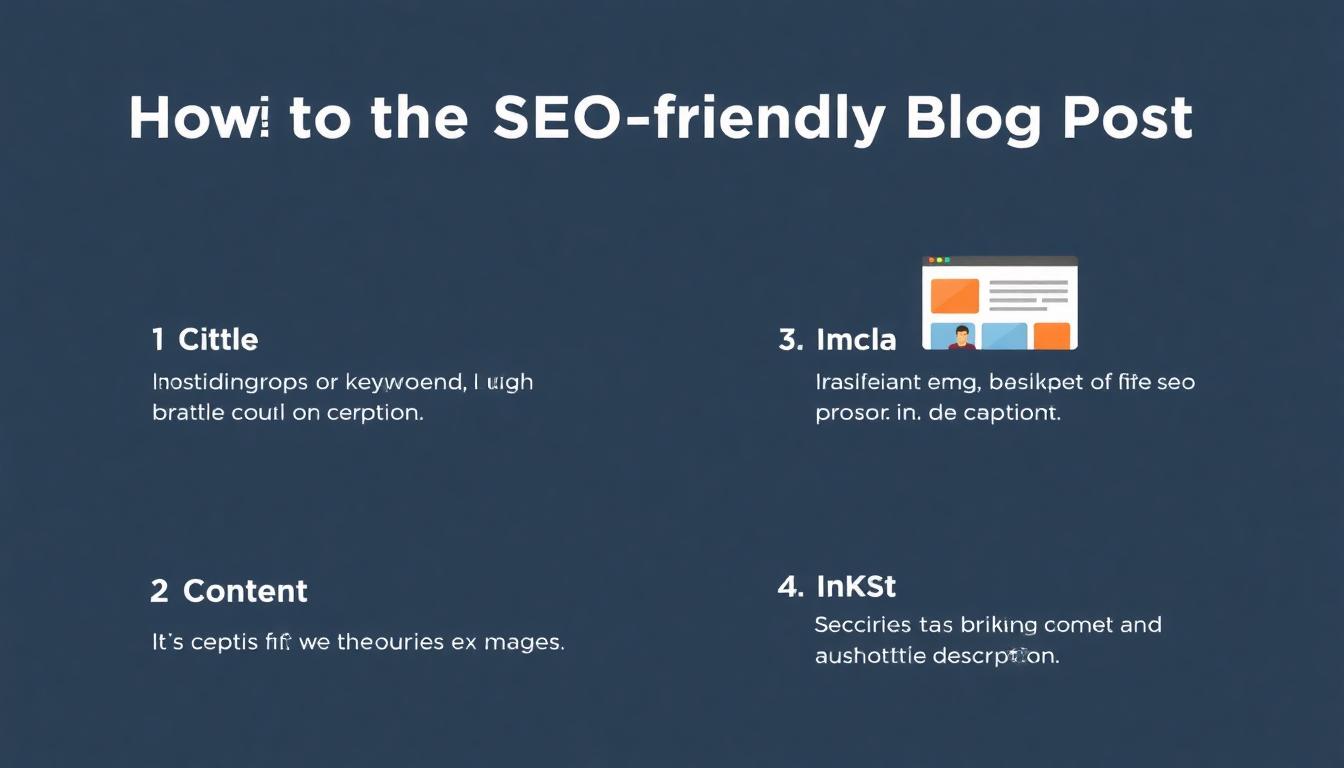Creating an SEO-friendly blog is the key to getting more visitors, building trust, and growing your brand. With so much content online, your success depends on making your posts easy for both readers and search engines to find and understand. This guide covers every step, from keyword research to content formatting, so your next blog post has the best chance to rank and reach your audience.
What is an SEO-Friendly Blog?
An SEO-friendly blog is a post that’s structured, written, and formatted to appear higher in search results. It uses keywords your audience searches for, answers their main questions, and makes it easy for Google’s bots to figure out what your page is about. SEO-friendly blogs are readable, helpful, and well-organized with tips that real people can use.
Step 1: Start with Smart Keyword Research
Keyword research helps you find the best topics and words your readers care about.
- Write down your blog topic or idea.
- Use keyword tools (like Google Keyword Planner, SEMrush, or Ahrefs) to find top keywords and questions.
- Pick one “main” keyword and 2-4 related words to use throughout your content.
- Look for keywords with a good number of searches and lower competition.
Tip: Don’t stuff! Use your main keyword in a natural way so your writing still flows.

Step 2: Plan Blog Structure and Content
Great blog structure helps readers scan your content and helps search engines, too. Use these ideas:
- Title: Use your main keyword near the start. Make it clear and useful.
- Headings: Break up content with headings (H2, H3). Include keywords when they fit.
- Short Paragraphs: 2-4 sentences per paragraph are easier to read on screens.
- Bullet Points and Lists: Use them for quick info, steps, or resources.
Sample outline:
- Introduction (include your target keyword)
- Main points (use headings, examples, and tips)
- Conclusion (summarize key takeaways and include a call to action)
Step 3: Write Clear, Useful Content
Your writing should answer reader questions and provide real guidance. Tips:
- Write in a simple, friendly tone.
- Use active voice.
- Focus on real-life examples, how-to steps, or lists.
- Add helpful links to other trusted sites.
- Avoid fluff and filler.
Pro tip: Every sentence should add value.
Step 4: Optimize Your Blog for Search
SEO isn’t just about keywords. Pay attention to these details:
- Meta Title: Reflects your blog’s topic and has your keyword.
- Meta Description: A short summary that makes people want to click. Use your main keyword again.
- URL: Short, clear, and includes the main keyword.
- Alt Text for Images: Describe every image for readers and search engines.
- Internal Links: Link to other related content on your blog.
This simple checklist will help improve your blog’s chance to rank.

Step 5: Add Visuals and Multimedia
Images, charts, videos, and infographics help explain your points and keep readers interested. Always:
- Use original or creative commons images.
- Give every image an alt tag.
- Place images near related text.
- Keep file sizes small for fast loading.
Step 6: Check for Readability and Flow
More readable blogs keep people on your site longer. Before publishing:
- Use headings and short paragraphs.
- Avoid jargon or complex wording.
- Read aloud to catch awkward spots.
- Use tools like Hemingway or Grammarly to fix errors.
Step 7: Publish and Share
After reviewing your blog, hit publish. Then:
- Share your post on social media.
- Send via email to your subscribers.
- Add links from other related posts.
- Respond to comments to boost engagement.

Extra SEO Tips
- Mobile Optimization: Make sure your blog looks good on phones and tablets.
- Page Speed: Compress images and limit plugins to make your site load quickly.
- Schema Markup: Add extra code to your site if you want rich snippets (like recipes, reviews).
- Update Older Posts: Refresh your blogs every few months with new info.
Common SEO Mistakes to Avoid
- Keyword stuffing (using the same word too many times)
- Long, unclear sentences
- Missing alt text on images
- Forgetting mobile users
- No internal links or call to action
Conclusion
Making an SEO-friendly blog isn’t hard if you follow these steps: start with strong keyword research, structure your post for both humans and search engines, write useful content, and use good formatting. Add images and meta tags, check for readability, and promote your post when it’s live.
A little extra effort on each blog post can lead to more traffic, better rankings, and a larger audience. Whether you’re writing your first post or your hundredth, use this guide every time to make sure your content stands out—for people and for Google search.
To contact us click Here .

